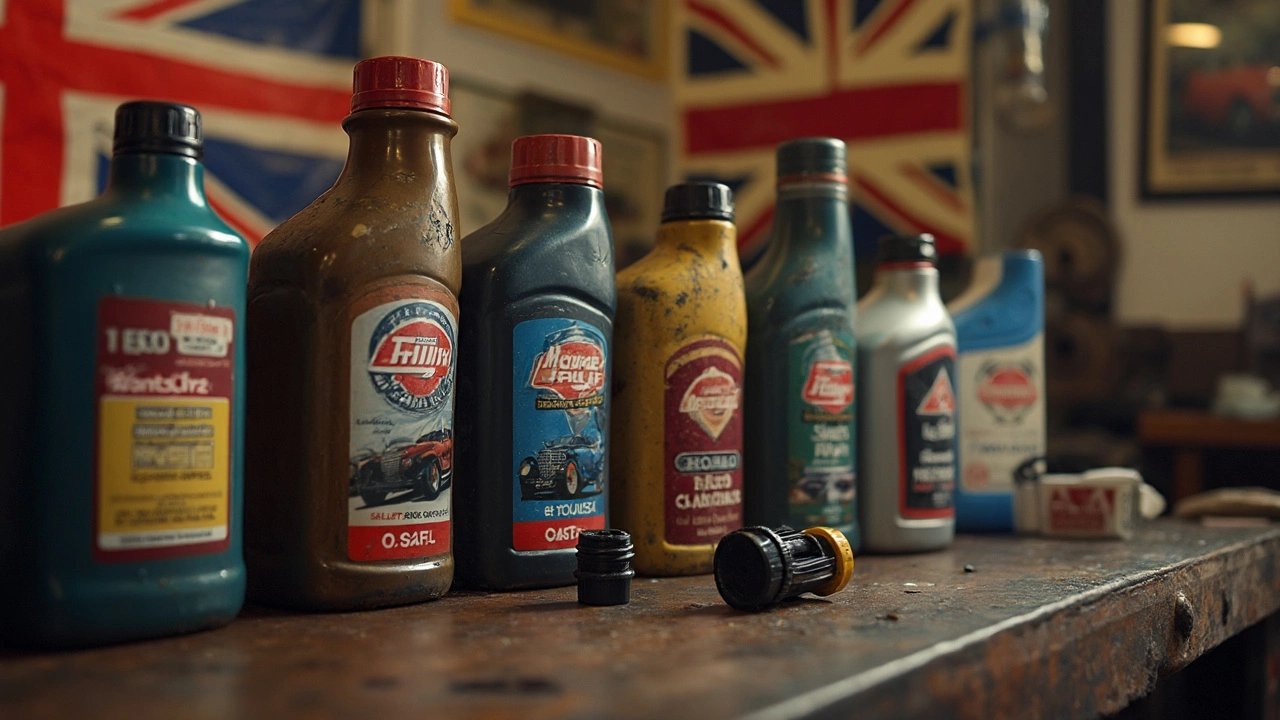So, you've just changed your engine oil and notice you've got some old oil left over. You might be tempted to just mix it with the new stuff next time. But is that a good idea?
First off, let's clear the air: mixing old engine oil with new isn't the worst crime in car maintenance history, but it's not exactly a best practice either. The magic of engine oil is in its ability to lubricate, clean, cool, and protect your engine. When oil does its job, it picks up a lot of contaminants, and its properties degrade over time. That's why you change it in the first place.
So, when you throw old oil into the mix, you're essentially tossing those contaminants back into your engine. It's like adding expired milk to fresh cereal—not ideal, right? While a small amount might not cause immediate harm, over time, it could affect your engine's performance and lifespan.
- Understanding Engine Oil
- Why Oil Quality Matters
- The Risks of Mixing Oil
- Signs Your Oil Needs Changing
- Proper Oil Disposal
- Best Practices for Oil Maintenance
Understanding Engine Oil
Alright, let's get into the nuts and bolts of what engine oil is and why it's so crucial for your car. At its core, engine oil is like the lifeblood of your vehicle. It keeps everything running smoothly by reducing friction between the moving parts.
Now, engine oil isn't just plain ol' liquid. It's packed with additives that help it do more than just lubricate. These include detergents to clean up gunk, dispersants to keep contaminants suspended, and antioxidants to prevent oil breakdown. It's like a little army working tirelessly to keep your engine happy.
Types of Engine Oil
You've got three main types on the market: conventional, synthetic blend, and full synthetic. Conventional is your basic option, coming straight from refined crude. Then, there's synthetic blend—a mix of conventional and synthetic—which offers better performance in extreme temperatures. Finally, the full synthetic is engineered to provide top-notch performance and protection. It's more expensive but lasts longer and performs better.
Oil Viscosity and Its Importance
The thickness of engine oil—or its viscosity—matters a lot. You might see numbers like 5W-30 on the bottle. This rating tells you how the oil will flow in hot and cold temperatures. The first number (with 'W' for winter) is about cold start performance, and the second about how well it works once your engine's hot.
If you're living in a place where winters are harsh, you might want a lower 'W' number for better cold starts. Meanwhile, a thicker oil at operating temperatures means better protection in a hot-running engine.
Why Oil Quality Matters
When it comes to engine oil, quality is king. You can't skimp on this crucial component without risking your car's health. Think of oil as the lifeblood of your engine—a high-quality oil keeps everything running smoothly, while poor quality can cause serious wear over time.
Engine oil is specially designed to perform several key functions. It lubricates the moving parts to reduce friction, cleans away harmful deposits, cools the engine by dissipating heat, and helps seal the pistons in the cylinders. When you use top-notch oil, all these tasks are handled expertly. But if you mix in old oil, you introduce wear-inducing particles and a degraded formula, reducing effectiveness.
Larry Carley, an automotive expert, notes, "Using high-quality oil helps in extending the engine's life span and maintains its efficiency. Mixing compromised oil can undo much of that benefit."
What's at Stake?
Let's break it down. Poor quality oil—or even just mixing new with old—might lead to increased engine wear, poor fuel efficiency, and even engine overheating. The issue lies in how quickly old oil loses its additive properties and how contaminants can react negatively with the fresh batch, diluting its effectiveness. So when you feel the urge to combine, think twice about those potential long-term impacts on your car.
Consider that regular maintenance and keeping an eye on your oil change schedule could save you from costly repairs in the future. Ensuring you use the right type also affects your car's performance and can maintain its resale value.
| Oil Change Interval (miles) | Oil Grade |
|---|---|
| 3,000-5,000 | Conventional |
| 5,000-7,500 | Semi-Synthetic |
| 7,500-10,000 | Full Synthetic |
By sticking to suggested oil grades and intervals, you ensure better engine health. Which means less stress for you and a reliable ride.
The Risks of Mixing Oil
When it comes to mixing old and new engine oil, you're essentially rolling the dice with your car's performance. Sure, topping up your oil level might seem harmless, but regular mixing can lead to issues over time.
Contaminants in Old Oil
Old engine oil is like a sponge—it absorbs dirt, metal particles, and other nasties floating around the engine. When you mix it with fresh oil, you're throwing those impurities back into the mix, and your engine has to work harder to function smoothly. Those particles can cause increased wear on engine components over time.
Degraded Additives
New oil contains additives designed to keep your engine running efficiently, like detergents and anti-wear agents. These additives wear out as the oil ages. Mixing old oil diminishes these benefits, leaving your engine less protected. You wouldn't want to put your engine at risk, would you?
Performance Variability
Oil viscosity, or its thickness, determines how well it flows through and protects the engine. Old oil's viscosity might have changed due to contamination, heat, and chemical breakdowns. By mixing it with new oil, you're creating an unpredictable blend that might not flow or lubricate as intended.
- Makes engine work harder
- Leads to increased engine wear
- Potential decrease in fuel efficiency
Voiding Warranty or Insurance
Modern engines are picky, and so are warranty agreements. Some manufacturers are strict about maintenance schedules, and adding old oil might void your warranty. It's worth checking those terms!
In short, while using up every drop of oil might feel resourceful, it's not worth risking your engine's longevity. Stick to fresh oil for consistent performance and peace of mind.

Signs Your Oil Needs Changing
Keeping your engine in top shape means paying attention to the engine oil. But how do you know when it's time for an oil change? Well, your car often gives you a few helpful hints.
Strange Noises
If your engine starts sounding like a drum set, it might be due to dirty or low oil. Good oil acts as a cushion, muffling engine noise. When it gets old or thin, things start getting noisy.
Change in Oil's Appearance
Fresh oil is usually amber and see-through. Over time, it collects dirt, turning darker. Pull out the dipstick—if the oil looks dark and grimy, it's time for a swap.
Status Light Alert
Most modern cars are pretty smart. They often have a dashboard indicator to warn you when it's time for an oil change. If that warning light comes on, don't ignore it.
Burning Smell
Smelling something funny, like burned oil? That's a major red flag. This could mean that there isn't enough oil lubricating the engine.
Exhaust Smoke
Seeing more smoke than usual from your exhaust? That might be oil burning up inside the engine, an indicator that things aren't running smoothly.
| Common Signs | Action Needed |
|---|---|
| Strange Noises | Check Oil Levels |
| Dark Oil Appearance | Change Oil |
| Status Light On | Schedule Maintenance |
| Burning Smell | Check for Leaks |
| Exhaust Smoke | Inspect Engine |
Spotting these signs early and acting on them can save you a lot of trouble. Regularly checking your oil, keeping an eye on its condition, and knowing when to change it are key to a healthy engine. Remember, your car depends on you to keep it running smoothly.
Proper Oil Disposal
Once you've squeezed every mile out of your old engine oil, what do you do with it? Just chucking it in the trash isn't an option. Improper disposal can seriously harm the environment. So, what's the right way to go about it?
Why Dispose of Oil Properly?
Used oil can contaminate water and soil, causing harm to wildlife and potentially getting into water supplies. One gallon of used oil can pollute a million gallons of water! That's why proper disposal is crucial, not just for legal reasons, but for the planet.
Steps for Safe Disposal
- Store It Right: After changing the oil, place the used oil in a clean, leak-proof container with a tight lid. An old milk jug or the empty oil bottle can do the trick.
- Label It: Clearly mark the container as 'Used Engine Oil' so it's not mistaken for anything else.
- Find a Recycling Center: Many places have designated drop-off sites for used oil. You can often take it to car repair shops, government waste facilities, or specific recycling stations.
- Transport Carefully: Secure the container in your car to prevent spills on your way to the recycling center.
Extra Tips:
It's worth noting that many places will also accept used oil filters and contaminated rags for recycling. Check with your local center on what they accept.
Want to know how much oil was recycled in your area? Here’s a quick look:
| Year | Gallons Recycled |
|---|---|
| 2023 | 15,000 |
| 2024 | 17,500 |
That’s a whole lot of oil kept out of our waterways! Following these steps is easy, and it makes a world of difference. Saving the planet, one oil change at a time.
Best Practices for Oil Maintenance
Keeping your engine in tip-top shape doesn't just happen by itself. Good oil maintenance is key. Let's get into some simple and smart practices you can follow to keep your car running smoothly and avoid any unnecessary hiccups.
Regular Oil Checks
First off, make it a habit to check your engine oil regularly. Ideally, once a month is a good rule of thumb. Pop the hood and pull out the dipstick to see where your oil level is at. If it's below the recommended line, top up with the right type of oil for your car.
Change Your Oil Timely
Keeping track of when your oil was last changed is crucial. Generally, it's good to change your oil every 3,000 to 5,000 miles, or as recommended by your car's manual. Newer models might offer longer intervals, so pay attention to what your manufacturer suggests. Fresh engine oil means better performance and less wear and tear.
Using the Right Oil
Not all oils are created equal. Different engines require specific types and grades of oil. Check your car's manual or consult with a professional to make sure you're using the right one. This ensures optimal lubrication and efficiency.
- Conventional: Great for older models with simpler engines.
- Synthetic: Offers better performance and longevity. Ideal for newer engines.
- Synthetic Blend: A middle-ground option, providing some benefits of synthetic but at a lower price point.
Routine Maintenance
Alongside regular oil changes, ensure you replace the oil filter during every change. The filter catches contaminants that could otherwise harm your engine. It’s a small part that makes a big difference. Keep an eye on it!
Listen to Your Car
If your car starts making unusual noises or if you notice a drop in fuel efficiency, it could be time for an oil change. Your vehicle often gives hints when something is amiss, so pay attention.
A bit of regular effort makes a massive difference in the long run. Stick to these habits, and you'll extend your car's lifespan while avoiding those irritating breakdowns and repair costs.

